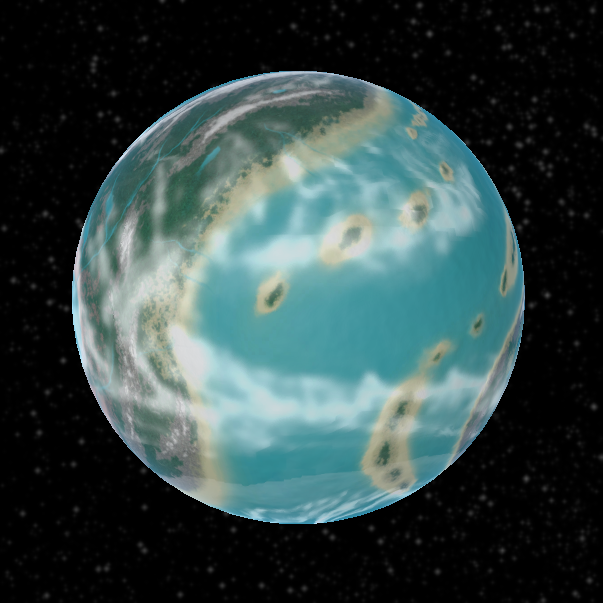Chryphóra
The second planet from the central star.
Geography
About half of this planet's surface is covered by water.
There is one large continent on one side, surrounded by three medium-sized continents, as well as several smaller landmasses and island chains.
Two of those smaller landmasses are giant volcanic islands formed where several tectonic plates collide.
There is a massive mountain range at the northern edge of the largest continent where one oceanic plate is pushed under it. Smaller ones formed along its length where continental plates collide. The medium-sized continents also have mountain ranges along some of their edges, depending on where the tectonic plates move.
Also of note is the giant crater near the center of the largest continent. It was left by a meteorite impact in prehistoric times and caused a fragment between the crater and the nearest ocean to break off and drift westwards.
Fauna & Flora
The planet is very rich in vegetation. Even in the hotter regions around the equator, there are resilient plants which evolved to store or live with very little water.
Certain plants also subsist on the chaotic energies from the Kaleidoscope, which are rather weak at that distance, but present nevertheless.
The color of Chryphóran plants leans towards a bluish green, due to a large amount of copper compounds in the ground.
Wildlife consists of birds, mammals and fish, as well as numerous insect species.
Natural Resources
Chryphóra's crust contains large amounts of copper, especially in the Southwest of the largest continent, where the meteorite impact introduced even more of that element. In said region, there is enough copper to color the ground accordingly.
The planet's resources further include wood, various types of rock, and fossil fuels.
From the agricultural point of view, there are edible plants as well as various animals which can be hunted or kept as livestock.
Alternative Name(s)
Qentora, Tuvasuno, The Watery Planet
Type
Planet
Included Locations
Contested By





Comments